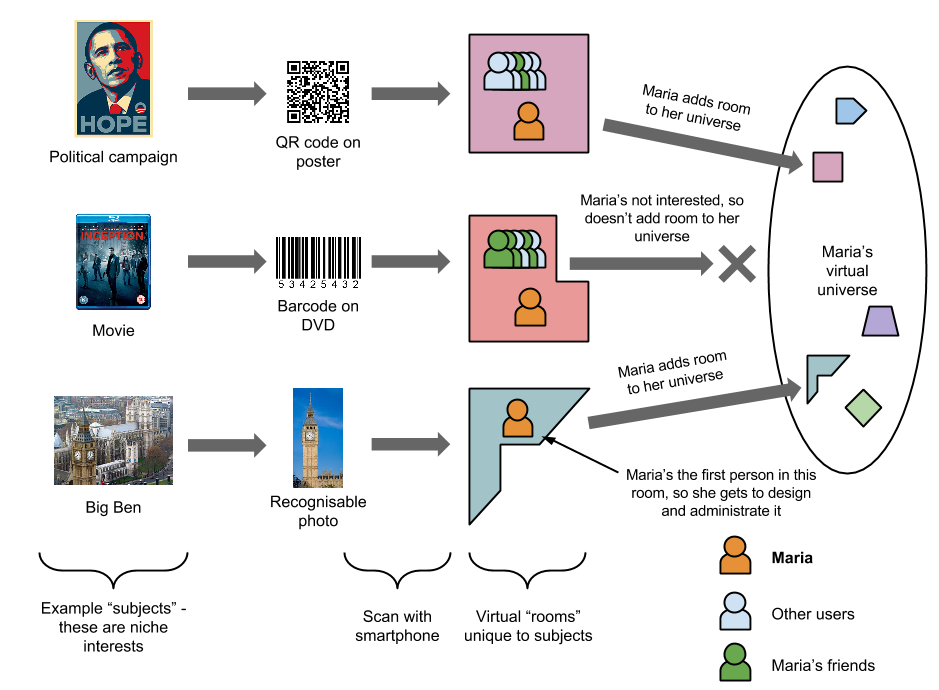In the last post, we explained that we were making a major change to our idea, from gaming, to a virtual world social network. The virtual world would encourage people of similar interests, who may not know each other, to socialise. This post will offer a brief proposal of how this will work.
Entering the virtual world
The innovative aspect of our virtual world is the way in which people are able to access the virtual world. We will recycle existing symbols – such as barcodes and QR-codes – to act as “portals” to the virtual world. These symbols may be scanned with a mobile device, at which point the user will be taken to a part of the virtual world relevant to what they’ve scanned.
The virtual world consists of “rooms” – each symbol has its own room, and each room has a theme related to the subject (e.g. a product) that the symbol represents. For example, if a person was to scan a QR-code they found on a poster, they would be taken to a room for that QR-code. The room would be occupied by everyone else who has scanned that same QR-code.
Three scenarios
To illustrate how this process may work, consider the three scenarios below:
- The Barack Obama “Hope” campaign led to a number of posters being put up in public places. If we assume that these had QR-codes on, then people were able to scan these to get more information about the campaign. In our social network, if a user were to scan that QR-code, they would be taken to a room dedicated to that poster, in which discussion make take place about it.
- Inception (the movie) is now available on Bluray. On the reverse, there is a barcode used to identify the film when taken to a checkout. When a person scans this using our social network, they will be taken to a room dedicated to the film Inception.
- Big Ben is a building in London popular with tourists. When a person photographs this using our social network, the user will be taken to a room dedicated to Big Ben. Note that this would depend on the technology to recognise landmarks (Google Goggles may provide this functionality).
In each case, once a person has entered a room, they may add them to their own “personal universe” such that they can later access them. They may also form friendships with people they meet in rooms, such that they can continue discussions on common interests.

Conclusion
Creating these scenarios has formed an outline of what functionality we expect from this social network. The next stage will be to continue background research and analysis into existing social networks, focusing specifically virtual worlds.








Please comment with your real name using good manners.